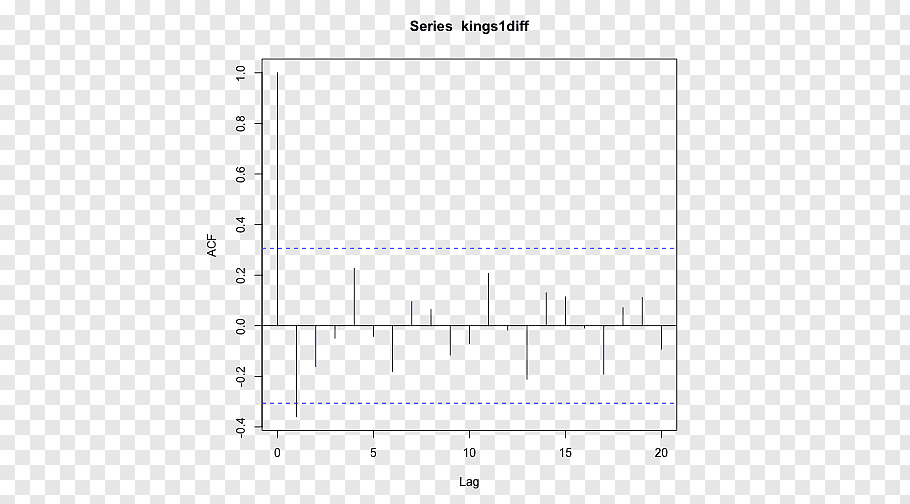Bookkeeping
What Is Depreciation? and How Do You Calculate It? Bench Accounting
Contents:


Learn accounting fundamentals and how to read financial statements with CFI’s free online accounting classes. All growth and depreciation rates are in generational frequencies covering 35 years. After three years, this car is projected to be worth 57% of its price when new – one of the lowest rates of depreciation of any car in any class. Examples from literature But although the unwarranted depreciation was robbery it was not the worst feature of the methods of this greedy money-changer.
Some systems permit the full deduction of the cost, at least in part, in the year the assets are acquired. Other systems allow depreciation expense over some life using some depreciation method or percentage. Rules vary highly by country, and may vary within a country based on the type of asset or type of taxpayer. Many systems that specify depreciation lives and methods for financial reporting require the same lives and methods be used for tax purposes. Most tax systems provide different rules for real property (buildings, etc.) and personal property (equipment, etc.).

The result, not surprisingly, will equal the project accounting depreciation per year again. Depreciation is often what people talk about when they refer to accounting depreciation. This is the process of allocating an asset’s cost over the course of its useful life in order to align its expenses with revenue generation. This is depreciation in its simplest form, but as you may have realized by now, there are usually factors that complicate things. Even so, if you go back to the matching principle, upon which depreciation is based, you will find that all the variations you are about to learn make sense.
Help us achieve our vision of a world where the tax code doesn’t stand in the way of success.
Businesses also create accounting depreciation schedules with tax benefits in mind because depreciation on assets is deductible as a business expense in accordance with IRS rules. For example, an asset with a useful life of five years would have a reciprocal value of 1/5, or 20%. Double the rate, or 40%, is applied to the asset’s current book value for depreciation. Although the rate remains constant, the dollar value will decrease over time because the rate is multiplied by a smaller depreciable base for each period. As stated earlier, carrying value is the net of the asset account and the accumulated depreciation.
Given that depreciation reduces taxable income, it is subject to much abuse. So the IRS generally implements rules on how assets must be depreciated. This matching principle matters to accountants, investors in your business and, potentially, auditors – but it should also matter to you. Simply put, depreciation, when executed properly, enables you to match your expenses to revenues, and come up with an accurate picture of your true business expenses over a specific accounting period.
All assets have a useful life and every machine eventually reaches a time when it must be decommissioned, irrespective of how effective the organization’s maintenance policy is. Therefore, a reasonable assumption is that the loss in the value of a fixed asset in a period is the worth of the service provided by that asset over that period. If, for example, you buy a car for $10,000, but a year later it is only worth $8,000 due to wear and tear, then the depreciation on the car is $2,000. The increase in the accumulated depreciation account reduces the asset to its current book value . To calculate depreciation using the double-declining method, its possible to double the amount of depreciation expense under the straight-line method. Section 1250 is only relevant if you depreciate the value of a rental property using an accelerated method, and then sell the property at a profit.
Join over 140,000 fellow entrepreneurs who receive expert advice for their small business finances
Fixed AssetsFixed assets are assets that are held for the long term and are not expected to be converted into cash in a short period of time. Plant and machinery, land and buildings, furniture, computers, copyright, and vehicles are all examples. Your accountant or tax preparer is probably your best resource for helping you take advantage of the depreciation expense on your company’s balance sheet.
For tax purposes, you will then deduct CA to reduce the taxable profit. After all, every asset has a specific lifespan and turns into scrap after this period. Therefore, recording the appropriate book value of an asset helps accumulate funds for its future replacement. The most common way of calculating depreciating expense is the straight-line method. The difference between the fixed asset cost and its salvage value is divided by the useful life of that asset in years to get the depreciating value for each year.
We also reference original research from other reputable publishers where appropriate. You can learn more about the standards we follow in producing accurate, unbiased content in oureditorial policy. Buildings and structures can be depreciated, but land is not eligible for depreciation. The carrying value of an asset after all depreciation has been taken is referred to as its salvage value. Accumulated depreciation refers to the sum of all depreciation recorded on an asset to a specific date.
Accumulated Depreciation
The company can also scrap the equipment for $10,000 at the end of its useful life, which means it has a salvage value of $10,000. Using these variables, the accountant calculates depreciation expense as the difference between the asset’s cost and its salvage value, divided by its useful life. This results in a total of $4,000 of depreciation expenses per year. There are several methods that accountants commonly use to depreciate capital assets and other revenue-generating assets.
Work with your accountant to be sure you’re recording the correct depreciation for your tax return. Christine Aebischer is an assistant assigning editor on the small-business team at NerdWallet who has covered business and personal finance for nearly a decade. Previously, she was an editor at Fundera, where she developed service-driven content on topics such as business lending, software and insurance. She has also held editing roles at LearnVest, a personal finance startup, and its parent company, Northwestern Mutual. An allocation of costs may be required where multiple assets are acquired in a single transaction. Purchase price allocation may be required where assets are acquired as part of a business acquisition or combination.
DEPRECIATION IMPACT ON PLANT AND MACHINERY – COUNCIL OF ENGINEERS AND VALUERS
DEPRECIATION IMPACT ON PLANT AND MACHINERY.
Posted: Thu, 13 Apr 2023 04:20:30 GMT [source]
Therefore, after a certain period, the value of the exhausted asset will be zero. This is the case for mineral mines, oil wells, and other similar assets. Due to the continuous extraction of minerals or oil, a point comes when the mine or well is completely exhausted—nothing is left. An asset may become obsolete due to better designs, new inventions, or simply changing fashions. This may result in the asset being discarded even though it is still useful and in excellent physical condition. You should consider whether you understand how CFDs work and whether you can afford to take the high risk of losing your money.
Here are four common https://1investing.in/s of calculating depreciation, along with when it’s best to use them. Costs of assets consumed in producing goods are treated as cost of goods sold. Other costs of assets consumed in providing services or conducting business are an expense reducing income in the period of consumption under the matching principle. Depreciation calculations require a lot of record-keeping if done for each asset a business owns, especially if assets are added to after they are acquired, or partially disposed of. However, many tax systems permit all assets of a similar type acquired in the same year to be combined in a “pool”.
It serves as an important input for calculating depreciation for assets which affects the profitability and carrying value of the assets. Internal Revenue Service has strict rules for how different types of assets must be depreciated with some being depreciated in one year and some like buildings as long as 40 years. The ideal is for an asset to be depreciated according to how it actually loses value, but this calculation would be hard to make for many assets.
Under this method, the more units your business produces , the higher your depreciation expense will be. Thus, depreciation expense is a variable cost when using the units of production method. Depreciation is the process of deducting the total cost of something expensive you bought for your business. But instead of doing it all in one tax year, you write off parts of it over time.
Reporting Assets
In some countries or for some purposes, salvage value may be ignored. The rules of some countries specify lives and methods to be used for particular types of assets. However, in most countries the life is based on business experience, and the method may be chosen from one of several acceptable methods. Amortization is an accounting term that essentially depreciates intangible assets such as intellectual property or loan interest over time. The annual depreciation using the straight-line method is calculated by dividing the depreciable amount by the total number of years. Different companies may set their own threshold amounts for when to begin depreciating a fixed asset or property, plant, and equipment (PP&E).

This is one of the two common methods a company uses to account for the expenses of a fixed asset. As the name suggests, it counts expense twice as much as the book value of the asset every year. Many systems allow an additional deduction for a portion of the cost of depreciable assets acquired in the current tax year. A deduction for the full cost of depreciable tangible personal property is allowed up to $500,000 through 2013. This deduction is fully phased out for businesses acquiring over $2,000,000 of such property during the year.
- Depreciation determines the loss of value of an asset over its useful life.
- You should consider whether you understand how CFDs work and whether you can afford to take the high risk of losing your money.
- Depreciation is thus the decrease in the value of assets and the method used to reallocate, or “write down” the cost of a tangible asset over its useful life span.
- That is, a business does not write a check to “depreciation.” Instead, the business records or recognizes the cost of the asset over time on the income statement.
What’s more, this will only apply to new assets, second-hand assets do not qualify. In a business’ tax workings, we will claim for `Capital allowances.’ These allowances are tax deductible and are set in the government Budgets each year. Well, when you buy an asset, say a car – you don’t expense it, even if you’ve spent money, instead, you record it as an asset, something you own. This means it doesn’t show up in your profit and loss directly, even if you’ve spent the money to buy it. The only parameter change that substantially reduces the role of persistence compared with the baseline case is the higher depreciation rate of human capital.
You divide the asset’s remaining lifespan by the SYD, then multiply the number by the cost to get your write off for the year. That sounds complicated, but in practice it’s pretty simple, as you’ll see from the example below. The IRS also refers to assets as “property.” It can be either tangible or intangible.
- Accordingly, depreciation usually doesn’t coincide with when the business buys the asset, even if the purchase is made over time with installment payments.
- Bench assumes no liability for actions taken in reliance upon the information contained herein.
- When a business calculates this, it will write off the asset’s cost over a number of years.
- You can expense some of these costs in the year you buy the property, while others have to be included in the value of property and depreciated.
If the vehicle were to be sold and the sales price exceeded the depreciated value then the excess would be considered a gain and subject to depreciation recapture. In addition, this gain above the depreciated value would be recognized as ordinary income by the tax office. If the sales price is ever less than the book value, the resulting capital loss is tax-deductible. If the sale price were ever more than the original book value, then the gain above the original book value is recognized as a capital gain. Accumulated depreciation is commonly used to forecast the lifetime of an item or to keep track of depreciation year-over-year.
